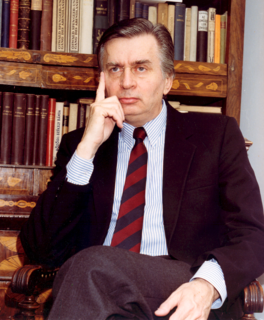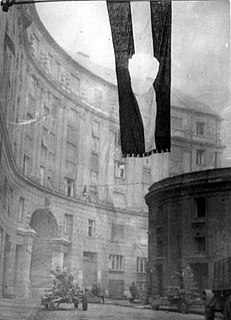
The Hungarian Workers' Party is a communist party in Hungary led by Gyula Thürmer. Established after the fall of the communist Hungarian People's Republic, the party has yet to win a seat in the Hungarian parliament. Until May 2009 it was a member of the Party of the European Left.

Parliamentary elections were held in Hungary on 10 May 1998, with a second round of voting in 175 of the 176 single member constituencies on 24 May.
General elections were held in Luxembourg on 21 October 1945. They were the first elections held after the German occupation during World War II. As a result of the war, the political alliances of the interwar period had been ended. In their place were new parties; the Christian Social People's Party, the Luxembourg Socialist Workers' Party, and the Patriotic and Democratic Group in place of the Party of the Right, Socialist Party, and Radical Liberal Party respectively. It is regarded as a realigning election, as the election established the party political order, with four established parties, that would be maintained until 1974.

General elections were held in Luxembourg on 18 June 1989. The Christian Social People's Party remained the largest party, winning 22 of the 60 seats in the Chamber of Deputies. It continued the coalition government with the Luxembourg Socialist Workers' Party.

The 1990 Hungarian parliamentary elections were held in Hungary on 25 March 1990, with a second round of voting taking place in all but five single member constituencies on 8 April. They were the first completely free and competitive elections to be held in the country since 1945, and only the second free elections in the country's history. The conservative, nationalist Hungarian Democratic Forum (MDF) beat the liberal and more internationalist Alliance of Free Democrats, which had spearheaded opposition to Communist rule in 1989, to become the largest party in parliament. The Hungarian Socialist Party, the former Communist party, suffered a crushing defeat, winning only 33 seats for fourth place.

Parliamentary elections were held in Hungary on 8 May 1994, with a second round of voting in 174 of the 176 single member constituencies on 29 May. They resulted in the return to power of the Hungarian Socialist Party, the former Communist party, under the leadership of Gyula Horn, who became Prime Minister. The Socialists achieved a remarkable revival, winning an overall majority of 209 seats out of 386, up from 33 in 1990. At the time, it was the most seats that a Hungarian party had ever won in a free election.
Parliamentary elections were held in Estonia on 24 and 25 February 1938. The National Front for the Implementation of the Constitution was the only party to contest the election, and won 64 of the 80 seats. Of the 16 independents elected, six were members of the Democracy Group, six of the Unity Group of Working People, two were Independent Workers and two were members of the Russian Group.

Parliamentary elections were held in Czechoslovakia on 26 and 27 November 1971. They were the first held after the Constitutional Act on the Czechoslovak Federation converted Czechoslovakia into a federal state, comprising the Czech Socialist Republic and the Slovak Socialist Republic.
A four-part referendum was held in Hungary on 26 November 1989. Voters were asked whether the President should be elected after parliamentary elections, whether organisations related to the Hungarian Socialist Workers' Party should be banned from workplaces, whether the party should account for properties owned or managed by it, and whether the Workers' Militia should be dissolved. All four proposals were passed, the first narrowly by 50.1% of voters, and the remaining three by 95% of voters. Voter turnout was 58.0%.

Parliamentary elections were held in Hungary on 17 May 1953. As would be the case with all elections for the remainder of Communist rule, voters were presented with a single list from the Communist Hungarian Working People's Party, comprising Communists and pro-Communist independents. The Working People's Party won 206 of the 298 seats, with the remaining 92 going to independents.

Parliamentary elections were held in Hungary on 24 August 1963. The Hungarian Socialist Workers' Party was the only party to contest the elections, and won 252 of the 340 seats, with the remaining 88 going to independents selected by the party.

Parliamentary elections were held in Hungary on 19 March 1967. The Hungarian Socialist Workers' Party was the only party to contest the elections, and won 259 of the 349 seats, with the remaining 90 going to independents selected by the party. Of the 349 constituencies, only nine had more than one candidate.

Parliamentary elections were held in Hungary on 25 April 1971. The Hungarian Socialist Workers' Party was the only party to contest the elections, and won 224 of the 352 seats, with the remaining 128 going to independents selected by the party. Of the 352 constituencies, only 49 had more than one candidate.

Parliamentary elections were held in Hungary on 15 June 1975. The Hungarian Socialist Workers' Party was the only party to contest the elections, and won 215 of the 352 seats, with the remaining 137 going to independents selected by the party. Of the 352 constituencies, only 34 had more than one candidate.

Parliamentary elections were held in Hungary on 8 June 1980. The Hungarian Socialist Workers' Party was the only party to contest the elections, and won 252 of the 352 seats, with the remaining 100 going to independents selected by the party. Of the 352 constituencies, only fifteen had more than one candidate.

Parliamentary elections were held in Hungary on 8 June 1985. The Hungarian Socialist Workers' Party was the only party to contest the elections, and won 288 of the 387 seats, with 98 of the remaining 99 going to independents selected by the party, whilst one seat remained unfilled until the following year.

Parliamentary elections were held in Romania on 28 March 1948. They were the first elections held under undisguised Communist rule; King Michael had been forced to abdicate in December.

The United Labour Social Democratic Party was a political party in Bulgaria.
The Estonian Independent Socialist Workers' Party was a political party in Estonia.
The Estonian Socialist Workers' Party was a political party in Estonia.















